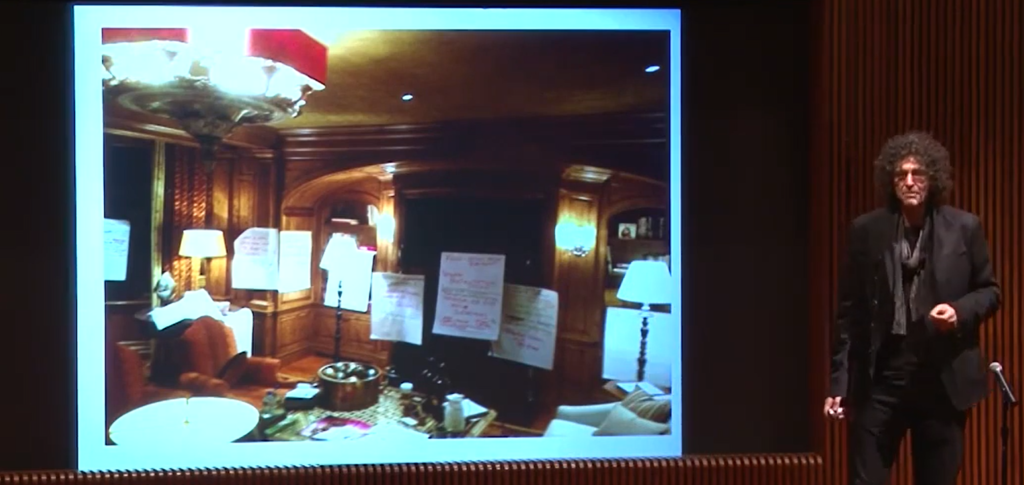
To perhaps no one’s surprise, the role of the air personality looms larger and larger as broadcast radio continues to duke it out with myriad competitors. A great music product, of course, still matters.
But the “secret sauce” continue to be the people behind the mic.
They’re the ones that make for habit-forming, buzzworthy radio. And they bring a special “cume urgency” to the table radio so often lacks.
As budgets grow tighter and staffs become smaller, it will become even more important for radio execs to understand the field of talent – who they are, what they make, and how how to retain them. Today’s “Best Of” blog post from last summer provides a start. – FJ
One of the real beauties of designing and conducting research is how much you learn.
That’s been the backstory for our 30+ Techsurveys, conducted for commercial, public, and Christian radio. We produce these studies to help our hundreds and hundreds of stakeholder stations better understand what their audiences are doing when they’re not listening to radio.
But truth be told, we at Jacobs Media learn a ton by spending time with this data, melding it with focus and L.A.B. groups, and connecting it up with the many conferences and conventions were are able to attend and enjoy, whether it’s CES, Podcast Movement, or the Public Radio Program Directors Content Conference where I am today.
One of the most eye-opening studies we’ve ever conducted is AQ, our talent-on-talent study we partnered with Don Anthony’s Morning Show Boot Camp to produce. It’s the first-ever study of air personalities in radio – who they are, what they feel, and their visions for their careers and the radio industry.
This year’s AQ2 study provides the first tracking data we have. And it also gave us an opportunity to craft new questions. One of my favorites? It’s based on one of the cliche interview questions that musicians always get hit up with: “So, who are your biggest influences?”
For our 1,000+ members of the talent community, we came up with an open-ended variation on that theme:
“Which current radio personalities/shows are most influential to you?”
There were no prompts or talent names to choose from. It was strictly a write-in vote, and our AQ2 respondents could come up with as many as three options.
And by combining the total number of responses from all the selections, we created the word cloud below to illustrate the winners, as well as the runner-ups. As is the case with these visual representations of research, the larger the name, the more popular he/she/they are among their peers.

Pretty definitive, don’t you think?
All told, Howard Stern was written in by three in ten (30%) of those casting votes. In a very distant second place is Rush Limbaugh (8%), followed by Dave Ryan and Elvis Duran (both with 6%), and Bobby Bones and Dan Patrick (both with 5%). Now these are big names in the radio business – personalities who are at the top of their respective games. And Stern whupped them all.
Howard took first place rankings among both men and women air personalities, as well as Millennials, Gen Xers, and Baby Boomers. He was on top among those in both diary and PPM markets. Howard also took top honors among respondents who entered the survey via a music station, while Limbaugh came in first among fans of spoken word radio – the only major category in which Stern did not land in first place.
Overall, an amazing performance by a guy who’s been off terrestrial radio for more than a dozen years. This AQ2 survey question underscores the long-term impact Howard’s had on radio, including the next generation of on-air talent.
And yet, Howard Stern continues to be very misunderstood – and not just by the FCC and those who conveniently stereotyped him a “shock radio DJ.”
But by hundreds and even thousands of his fellow DJs.
Howard’s talent, his approach, his passion, his work ethic, and his attention to detail have been misunderstood or overlooked by other distractions that shinier and more controversial.
I’ve been in umpteen morning show meetings where prep often becomes a topic of conversation. And I’ve heard many personalities beg to have more freedom, to be able to chat like Howard, Robin, and the ensemble cast on topics, whether it’s the news, pop culture, sports, or celebrity interviews.
The truth is, Howard and his team make it look and sound simple. But it’s anything but. And that’s part of the magic of his show and his cult of personality. It sounds authentic, unrehearsed, and real. But the fact is, Stern’s show is calculated, strategic, and just plain smart.
In fact, the entire process of making it sound casual, conversation, and easy doesn’t just organically happen. It requires work, planning, a team effort, vision, and attention paid to everything.
Now, while I had a meeting or two with Howard back in the early K-Rock/New York days, I had no idea what his regimen looked like as his syndication network blossomed or especially when he joined SiriusXM.
Until now.
That’s because a radio friend sent me a one-hour YouTube video called “Derek from Texas talks about home mortgages.” In reality, it’s a video surreptitiously taped at a Howard Stern team meeting back in 2013. And it’s a rare look behind the scenes of the most successful radio show of all time, but also a glimpse inside Howard’s head. Yes, it’s a rant at times, but that’s merely a reflection of Stern’s deep passion, drive, and desire to produce a great show.
He doesn’t need the money. After all these years, contracts, bonuses, and other revenue sources, Howard could have bought an island and retired years ago. But while his bank account and stock portfolio matters to him (as much as it means to any of us), it has always been clear Stern has a higher purpose in mind.
As not just a consultant and programmer, but as a fan of great radio, I geeked out on this video. I’ve watched it three times. It’s a remarkable and rare look at Howard, exhorting his troops to work harder, smarter, and more strategically for the good of the show. Yes, he’s on a stage, jocking PowerPoint slides – not the environment in which you’re used to watching him ply his craft.
The theme is simple – it’s Howard’s master plan about how he’s going to take the show – with the help of his staff – to that all-important next level. The title of his presentation says it all:
REVOLUTION 2013
Where are we going?
How are we getting there?
Early on, he shows us a shot of his home office, but more importantly, his process – how he thinks about and organizes his show, what keeps him up at night, and even his dreams.

After watching the video, you can’t help but come away being more impressed with Howard and what he’s accomplished. There’s nothing casual or happenstance about this show. These are not people sitting around, shooting the shit about what they did last weekend. It’s calculated – and to hear Howard tell it – it needed to be more focused and coordinated with him on his staff. At least that’s the way it was six years ago.
A major focus of the video revolves around guests on the show – how they’re recruited, persuaded, cajoled, marketed to, and even treated. Howard’s goal back then was two A-list guests and two B-list guests per week (on the three shows produced). And he step-by-step goes through the process of what needs to be done in order attract and entice superstars and their publicist teams to say “yes” to the Howard Stern Show.
As he exhorts at one point, “It’s like we’ve Jehovah’s Witnesses. We knock on people’s doors.”
Stern’s manifesto goes into exhaustive detail: the look of the studio, the appearance of the staff, a remodeled green room, thank-you notes, and every little touch that contributes to upping the show’s game and attracting better guests.
You also get the feeling that Stern’s perfectionism is another quality that greatly contributes to his brand’s success. As he reminds his team, “Everything we touch needs polishing.”
It must have worked. Six years later, and the show is bigger than ever. More importantly, Howard has emerged as the best interviewer out there. Ask anybody in the media business. I’ve heard people in both commercial and public radio say he’s as good as – if not better than – Terry Gross, host of NPR’s “Fresh Air.” Not bad for a guy who was once famous for swinging across the stage dressed as Fartman.

I’ve been sitting on this video for weeks, expecting it to be discovered and blasted all over social media. Or somehow someone at one of the radio industry’s trade publications would have stumbled onto it.
But that hasn’t happened. And recently, someone took it down from YouTube.
I expected this might happen, so I taped it. It’s ready for you to watch it but hurry (in the event Don Buchwald sends the cease & desist).
Howard may be pissed off at me for writing this post and including the video. And if so, apologies.
But he would have likely done the same thing with a commodity this fascinating. And I truly believe that radio and personality shows will truly benefit from seeing this crash course in radio and branding done right. It deserves to be seen. Not just because it’s a great lesson for fledgling radio stars, but also because it only enhances and brighten Howard’s rich legacy.
He is that good, and his fans, critics, and everyone else in his orbit will appreciate what truly goes into the show.
Sadly, Stern’s sermon from the mount abruptly ends at the 1-hour mark, so we have no idea how long this lecture – or rant – lasted. I could have sat through another hour.
Congrats, King of All Media, on earning most-influential status among your brothers and sisters behind the mic.
You probably couldn’t have imagined this would have happened back in the 70s when you started this journey.
Or perhaps you knew it all along.
- The Exponential Value of Nurturing Radio Superfans - April 28, 2025
- What To Do If Your Radio Station Goes Through A Midlife Crisis - April 25, 2025
- A 2020 Lesson?It Could All Be Gone In A Flash - April 24, 2025





Thanks for posting, Fred. Did Stern end up convincing holdouts like Eddie Vedder and Neil Young to be interviewed? I’ll be very curious to see if your link to the video gets pulled. #Cliffhanger
After he got Hillary Clinton to talk about her sex life, her knows?
Thanks for reposting, Fred. This should be required viewing for anyone sitting behind a microphone whether it be the last 50 years or the next 50. Howard could single handedly be the savior of broadcast radio (or TV for that matter). Too bad he doesn’t have to me. Not sure what motivates him these days -but he proves time and time again what a great communicator can do. We had Imus, we had Jean Shepard. We had Joe Pyne and Paul Harvey. Today’s entertainers have, for the most part, tow the line to stay on the good side of the FCC. You’ll never find another like those who’ve passed. Lessons can be learned from this video, and from the likes of Howard. Happy New Year!!
The truly great ones walk the line well. Stern figured it out, but perhaps had to leave broadcast radio in order to truly accomplish it. Imus got caught up in his own reputation and maybe his inner beliefs. We’re blogging about I Man on Monday, covering some of the thinking you express in this comment. Thanks, Dave, and all the best.